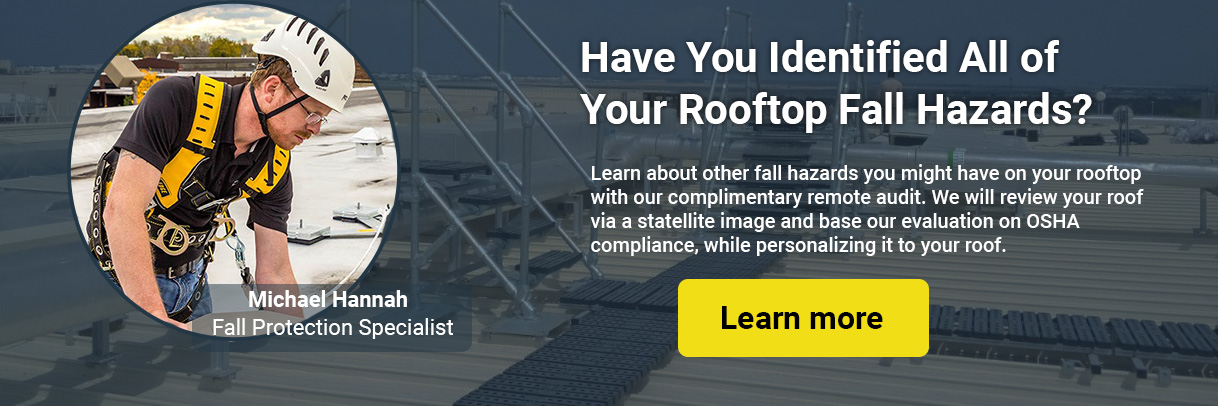Top 10 Rooftop Hazards

Every time you or your team access a rooftop you should take every precaution and avoid hazards and dangerous situations. But sometimes we all need a reminder about what specifically to look out for, so we’ve compiled this list of the top 10 hazards you should be aware of before you access a rooftop.
- Roof Stability - Is the roof strong enough to support the weight of a human? Are the trusses intact? Will the roof bow on a hot day? Check the underlayment before going onto the roof.
- Ladder Security & Placement - Is the ladder secure and at a 4:1 angle? Are the feet secure? Is the top above the roofline and tied securely? A number of fatalities occur each year because of a poorly placed ladder. Always inspect your ladder and the area around your ladder prior to use.
- Weather Conditions - Ice, snow, and wind are always a hazard on a roof if the shingles or other surfaces are slippery. Membrane roofs are especially slippery in wet conditions and should be avoided under these circumstances.
- Roof Holes - Unguarded skylights and poorly covered holes. Without fall protection, an open hole on a roof can be just as deadly as the roof edge, and according to OSHA 1910.28 requires a skylight screen or railing on all exposed sides.
- Edge Awareness - Losing the edge of the roof can be a problem when you are engaged in roof work. Some employees get so wrapped up in their project that they forget where the roof edge is.
- Improper Training - If there is someone on the roof who has not been properly trained, they are a rooftop safety hazard and could cause serious injury to themselves or others.
- Improper Use of Fall Protection Equipment - Such as poorly anchored railing, lanyard too long, or a weak tie-off point. Understanding and training on how to properly use fall protection equipment are critical.
- Poor Line of Sight - Ridge vents, chimneys, shingle bundles may block egress on a roof. Maintain a good line of sight so that you know where you are in relation to the roof’s edge.
- Pitch - The steeper the roof is, the risk of falling increases. Ensure that the fall protection and shingle bundles are secure before setting foot on the roof.
- Split Level Roofs & Fall Heights - Employees engaged in roofing activities on low-slope and split-level roofs with unprotected sides and edges 6 feet (1.8 meters) or more above lower levels should have the proper fall protection equipment.
Regardless of the situation, fall protection should always be used when accessing a roof and a working knowledge of personal protective equipment (PPE) will save lives. The top ten list was comprised of fatalities in the workplace with detailed reports on the OSHA website.



